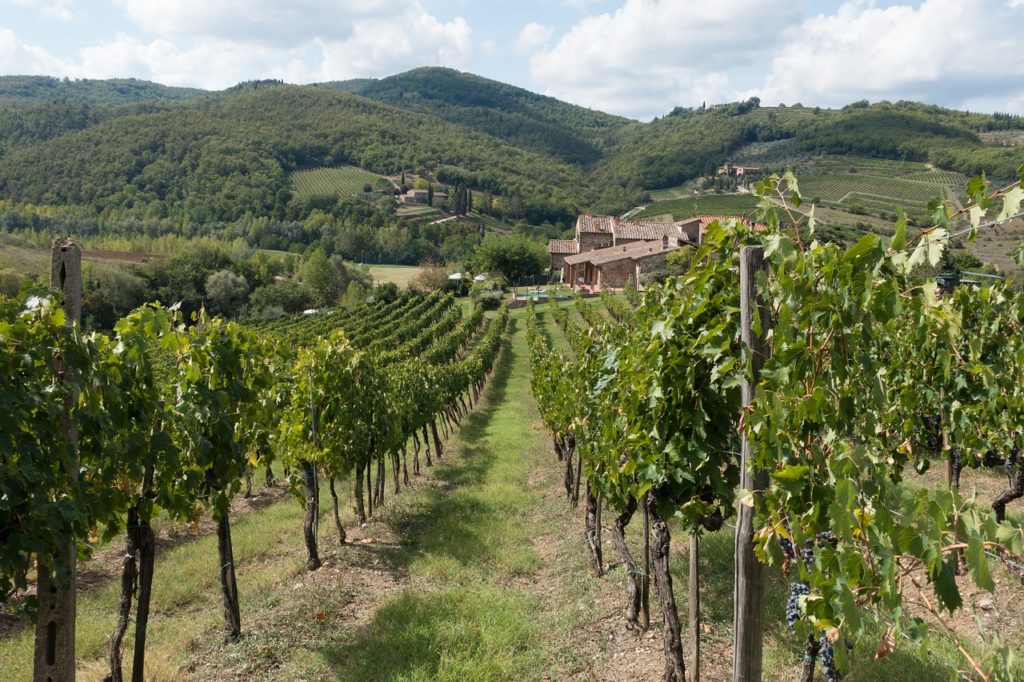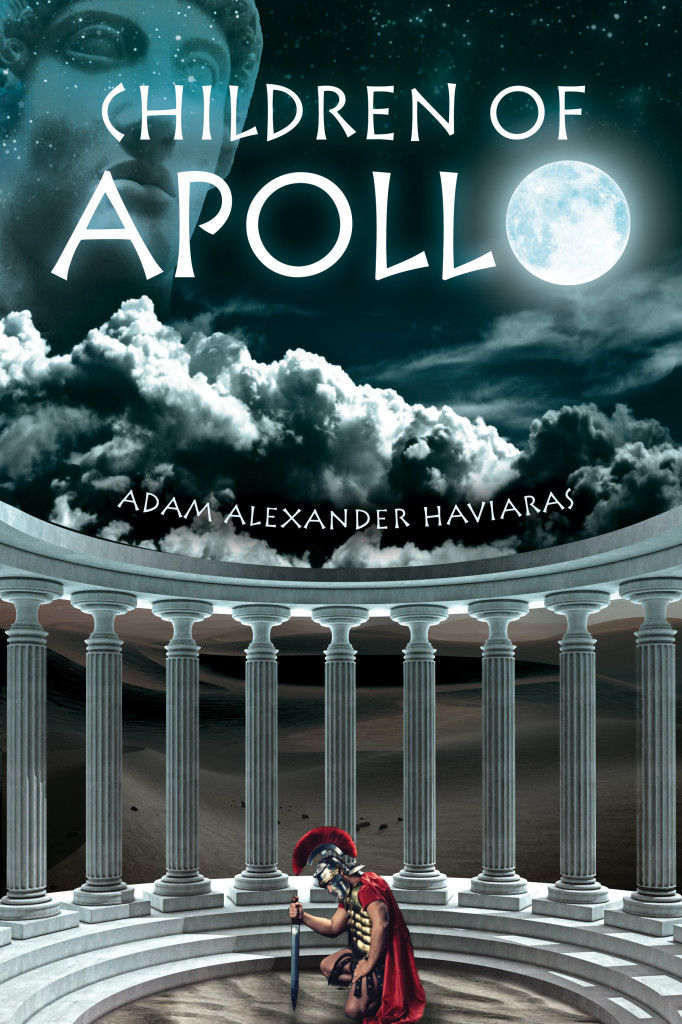
Part I – The Desert
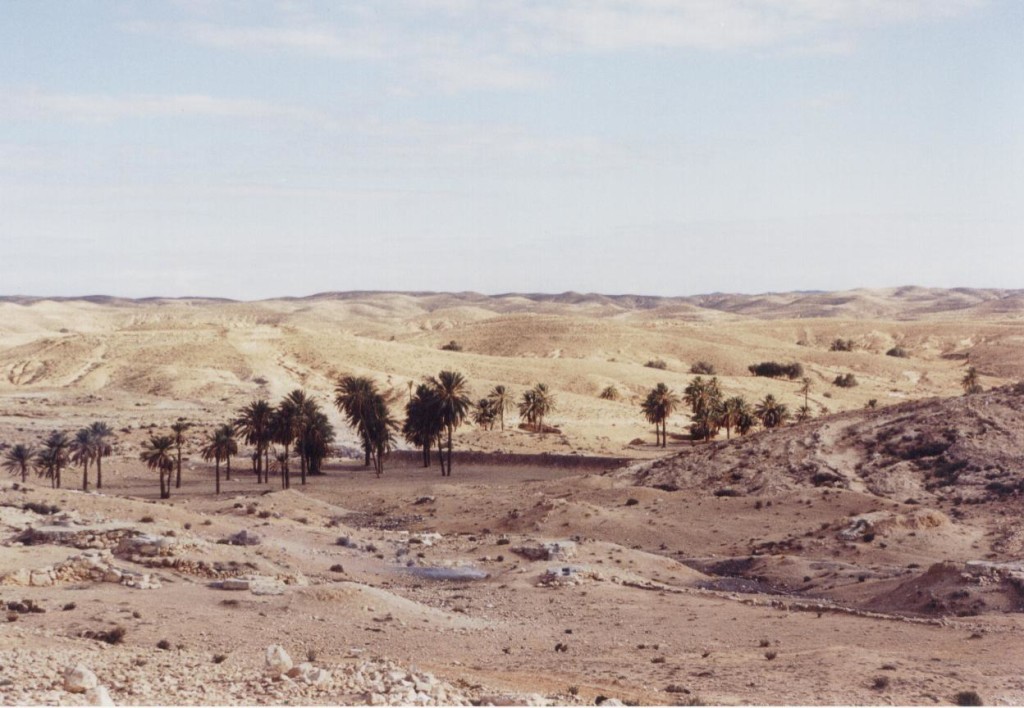
Matmata
For this series of posts that I’m calling The World of Children of Apollo, we’ll be taking a brief look at the Roman Empire at the beginning of the 3rd century A.D. Not to worry, this will not be an exhaustive history lesson but rather an historical and modern tour, guided by fiction. I’ll post photos and little anecdotes related to my travels and research over the course of writing Children of Apollo.
In this first entry, I’m going to look at the desert. From my very first glimpse, first smell and touch, of the North African Sahara, I knew that the desert itself would be a character. I had always wondered how something so plain could be such a draw. However, I immediately fell in love with the landscape. It’s unlike any other place, a sand sea of undulating dunes and scattered oases. In some areas, the sand is literally as soft as sifted flour.
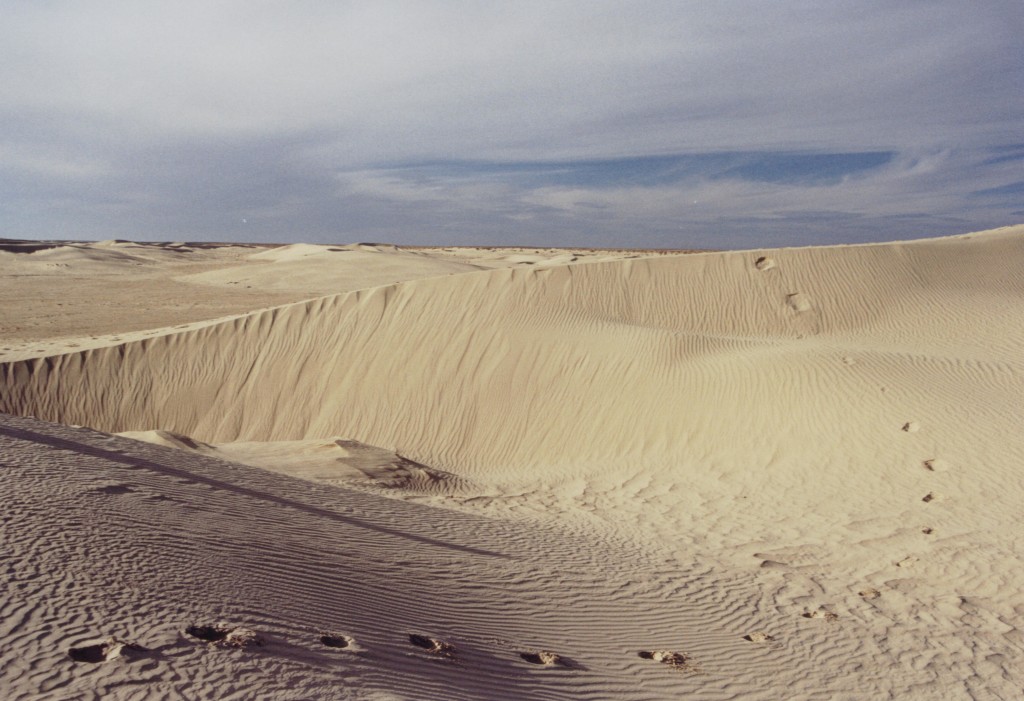
Saharan Dunes
Children of Apollo (you can read an excerpt HERE) begins with a Roman cohort marching through the desert in the provinces of Cyrenaica and Africa Proconsularis, which included modern Libya and Tunisia. I was not able to visit Libya but, when I was in the Tunisian Sahara, the image of a marching Roman column in the heat of the bleak but mysterious landscape was something that stayed with me. This was the southern frontier of the Roman Empire, from Egypt to the Atlas Mountains of Mauretania province. The II Traiana garrisoned Alexandria and small auxiliary detachments were stationed at settlements along the coast. The only other full legion in North Africa at the time was the III Augustan stationed at Lambaesis, to the west, in Numidia.
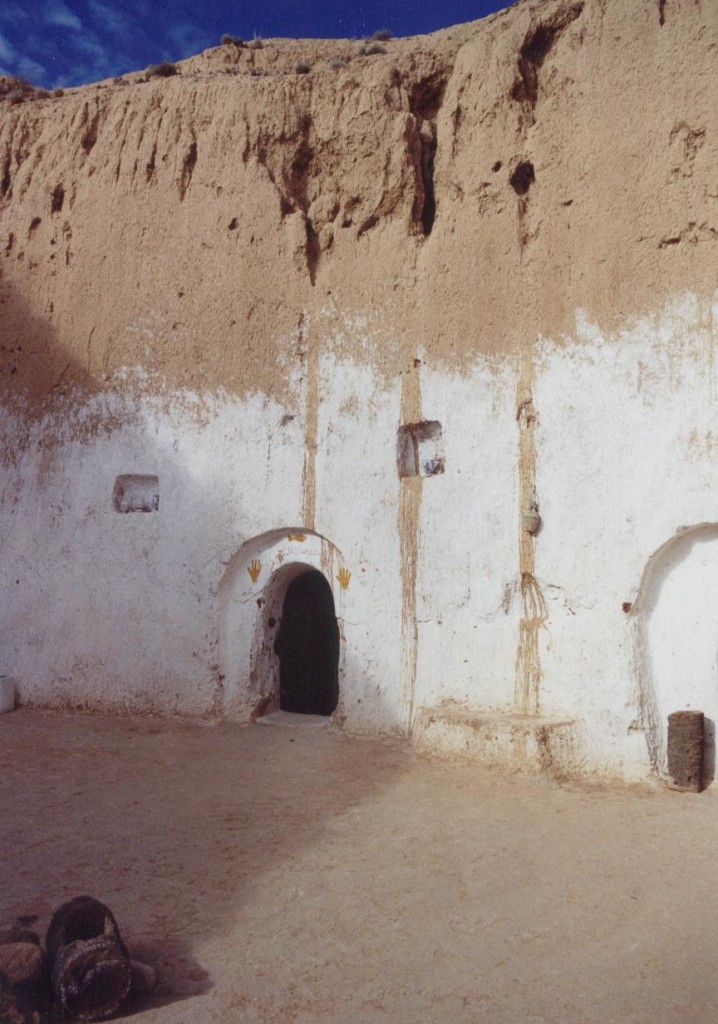
Troglodyte Dwelling – Matmata
In Tunisia or, what was Africa Proconsularis, the Sahara is not only made up of soft, sandy dunes that lend themselves to a meditative, barefoot promenade. The terrain toward the coast can be quite green at times. Other areas are covered by great salt lakes where the crystalline formations reflect the sun with diamond-like fascination. There are also the rocky, desert regions, such as Matmata and Tataouine, where some people live in troglodyte dwellings. Star Wars fans will be interested to know that Owen and Beru’s farmstead was filmed in one such dwelling in the same area. Basically, these are caves below ground level where the walls are painted white so that the people can stay relatively cool even in the intensity of the summer heat. I was there in January, so I experienced no such discomfort.
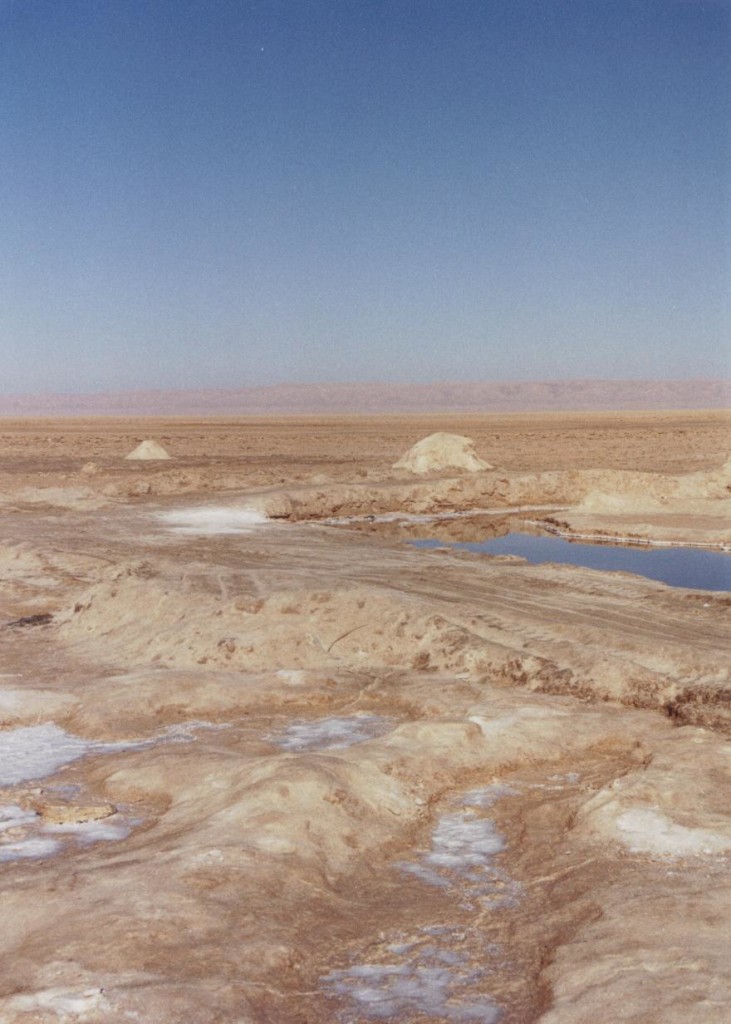
Salt Lake of
Chott El Jerid
At one point, we pushed on to some of the southerly Tunisian settlements. Our 4×4 bounced along through olive groves, through rocky passes and on into the dunes as our driver, Sami, grooved and ululated to a cassette called ‘Couscous Beats’. The writer in me was absorbing all of the stimuli and one such place was the Douz Saharan market where I could have bought a camel or donkey, if that was my inclination. The market had vintage radios, tin jewellery with Berber designs, fezzes and mounds of fragrant spices. But watch out for the pickpockets! One of our group had her purse sliced with an exacto knife and she was none the wiser. Luckily, she was a birder and her binoculars blocked the thief’s hand from grabbing anything from that side of the purse.
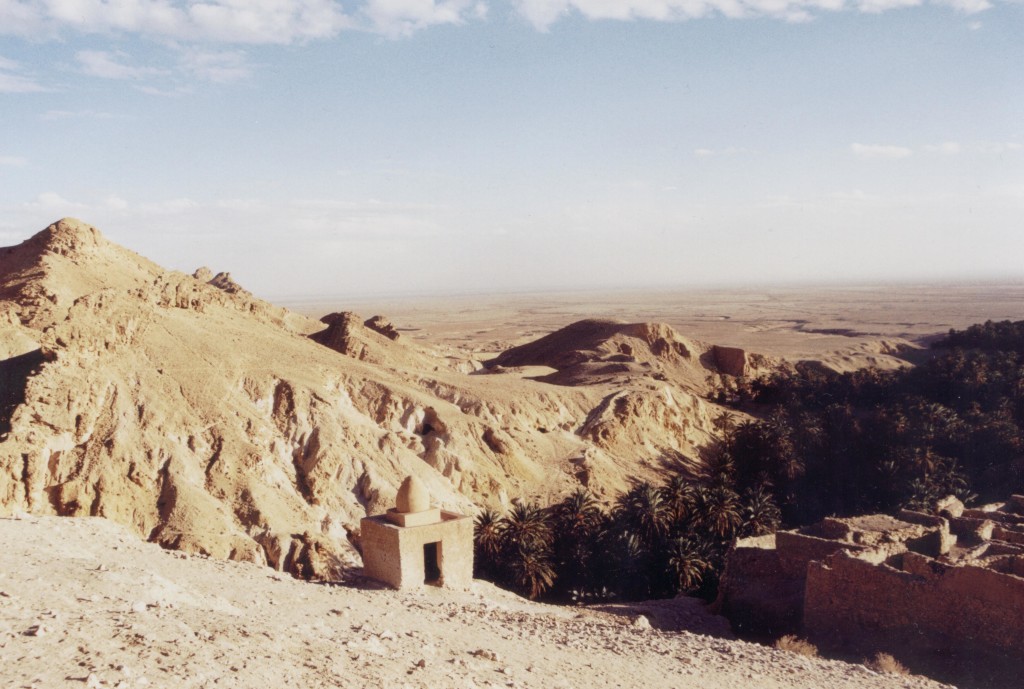
Oasis
Watching the sun set on the Sahara was a peaceful, awe-inspiring experience that I will never forget. That is, until three Berber horsemen wielding rifles pounded up toward us. My French came in handy as I explained our presence and our admiration of the beauty of the desert. I don’t know if they actually gave a toss or not because they just circled us a couple times and galloped off.

Sahara near Tozeur
The next day we visited the Mos Eisley set of Star Wars (Episode II at that time) near Tozeur (guarded by a couple of Berber men, their camels and two really long rifles). For me this was a real thrill and though the main part of the set was blocked off, there were other, smaller set pieces that could be visited. It was a beautiful spot and difficult to imagine what it might have been like with the entire cast and crew of Star Wars there. Somewhat less peaceful, I imagine.
From there we headed north along the Algerian border. We asked our guides if we could go into Algeria, which seemed much rockier, and they said that if we approached the boarder we would be shot at. I tried to imagine Lambaesis, in the distance, where an entire Roman legion was based so long ago. I knew it had to be a part of my story, but at that early stage I wasn’t sure yet how big a part it had to play.

Douz Animal Market, Tunisia
In the next instalment of The World of Children of Apollo, I will look briefly at some of the towns and larger settlements of Roman North Africa.
Wine, olives and gladiatorial combat are optional!
Part II – Roman North Africa

Temple of Peace
Thurburbo Majus
In this second instalment of The World of Children of Apollo, we are going to take a brief tour of some of the settlements of Roman North Africa.
When I say ‘Roman’ I mean located within the Roman Empire, such as it was at the beginning of the 3rd century A.D., when Children of Apollo takes place. In actuality, most of the ‘Roman’ settlements in North Africa were either of Phoenician or Greek origin, with the exception perhaps of the legionary base at Lambaesis and the nearby colonia of Thamugadi, the latter established for veterans of the III Augustan Legion.
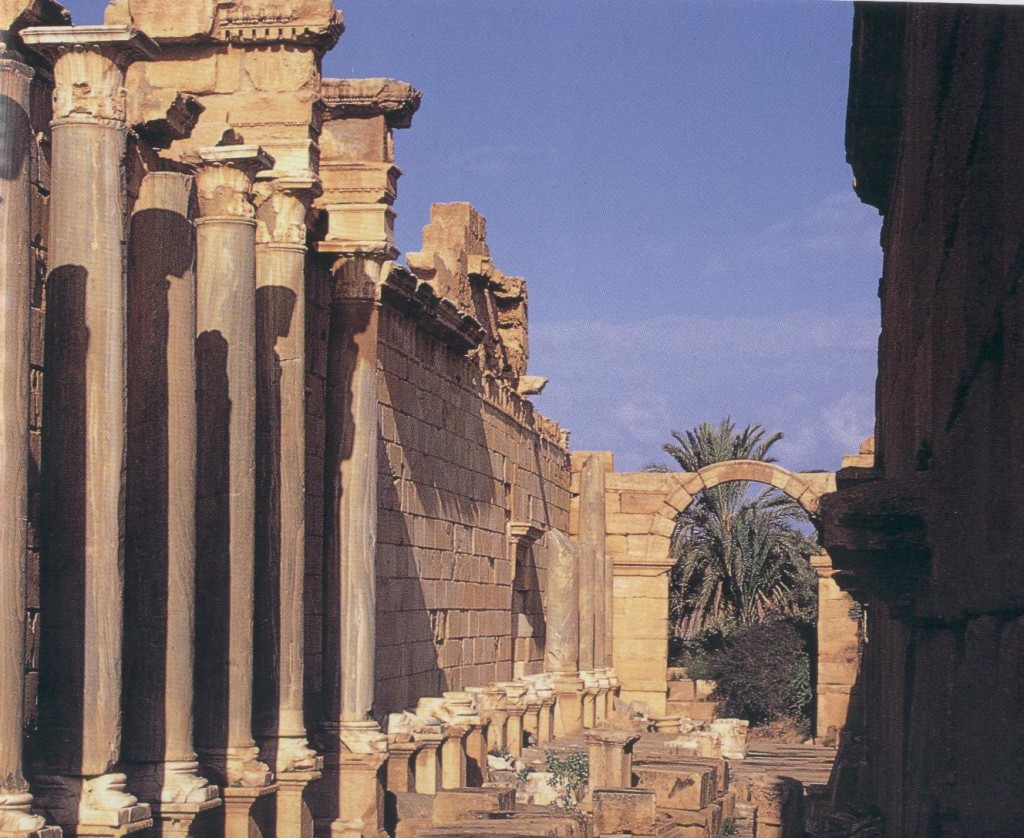
Severan Basilica
Leptis Magna
The southern Mediterranean coast was dotted with rich trading cities, settlements such as Apollonia, Cyrene, Leptis Magna, Sabratha and the once proud Punic capital of Carthage. Then there were the inland settlements of Thysdrus, Thugga, Thurburbo Maius and others. Where Egypt had long been the grain basket of Rome, the rise and wealth of these other settlements made them the new cornucopia of Empire. They were the leading producers of grain, oil, olives and garum (a highly popular fish sauce). The fact that Septimius Severus and his kinsman, the Praetorian Prefect Gaius Fulvius Plautianus, were from Leptis Magna ensured that the city and the region received imperial favour and capital investment.

The Forum of Sabratha
Children of Apollo begins in the desert of Cyrenaica province, near settlements of Apollonia and the splendid city of Cyrene, both across the water from Crete. I was not able to travel to these two sites in modern Libya, but from my research they seem splendidly sited in the fertile lands near the Mediterranean. Apollonia served as a port for Cyrene which was surrounded by olive groves and fields of wheat and barley. Cyrene itself rivalled Carthage in size and prosperity.
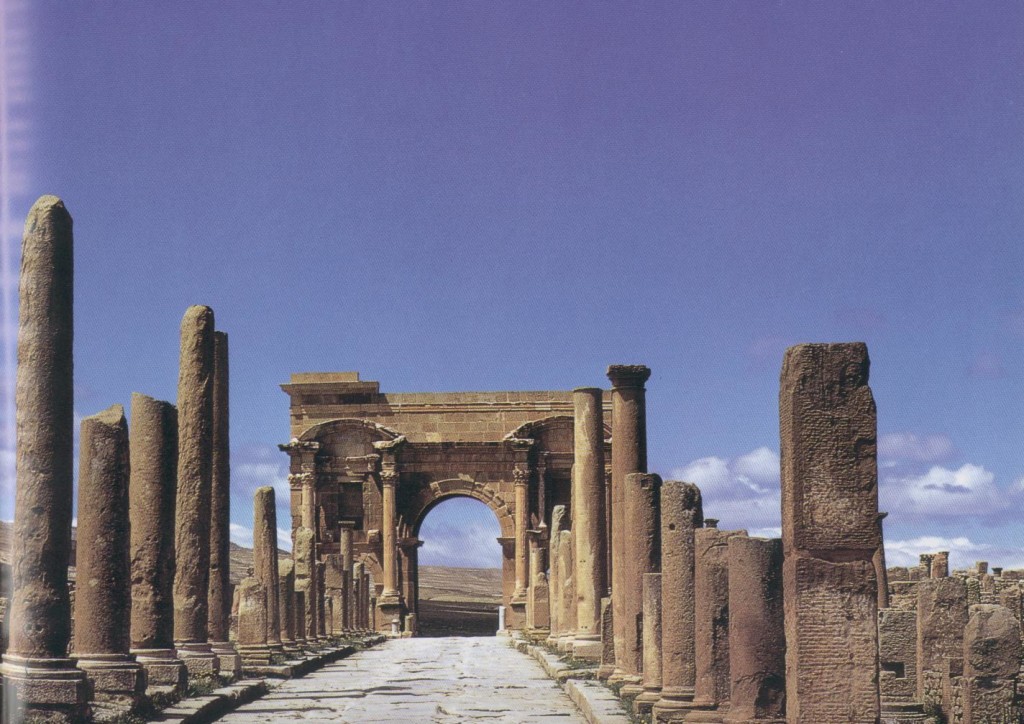
Arch of Trajan
Colonia of Thamugadi, Numidia
Moving west, one comes to the great city of Leptis Magna, the home town of Emperor Septimius Severus. Lucius does not visit this city in Children of Apollo, but rather in the next book, Killing the Hydra.
Leptis Magna garnered much wealth from its fertile lands with cereal crops and olives. Emperors Trajan and Hadrian had building projects there, but under Severus the city received much favour with a large new forum, a colonnaded street, a unique four-sided triumphal arch, a basilica, added warehouses and a lighthouse. Our main character, Lucius Metellus Anguis, gets his first real taste of politics in the town of Sabratha where he must make a very difficult decision that impacts later perceptions of himself.
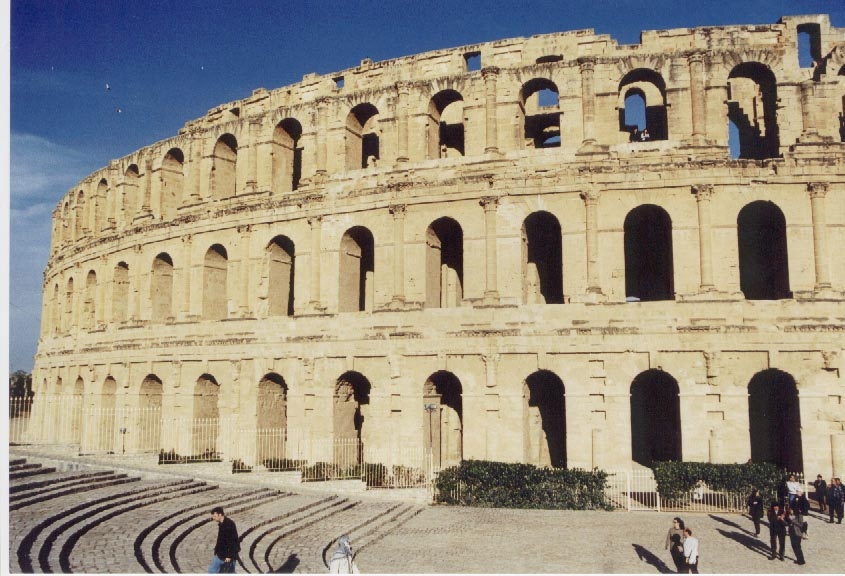
Amphitheater of Thysdrus
When it comes to Tunisia, there are several Roman settlements. Lucius and his men end up attached to the III Augustan Legion at Lambaesis, on the rocky, Numidian plain of what is now Algeria. A unique feature of the base was its massive, enclosed parade ground which featured a viewing platform with an equestrian statue of Emperor Hadrian in the centre, a commemoration of that emperor’s visit to the base. Lucius meets up with some old friends at the colonia of Thamugadi which was founded by Trajan and featured high walls, a library and fourteen public baths.
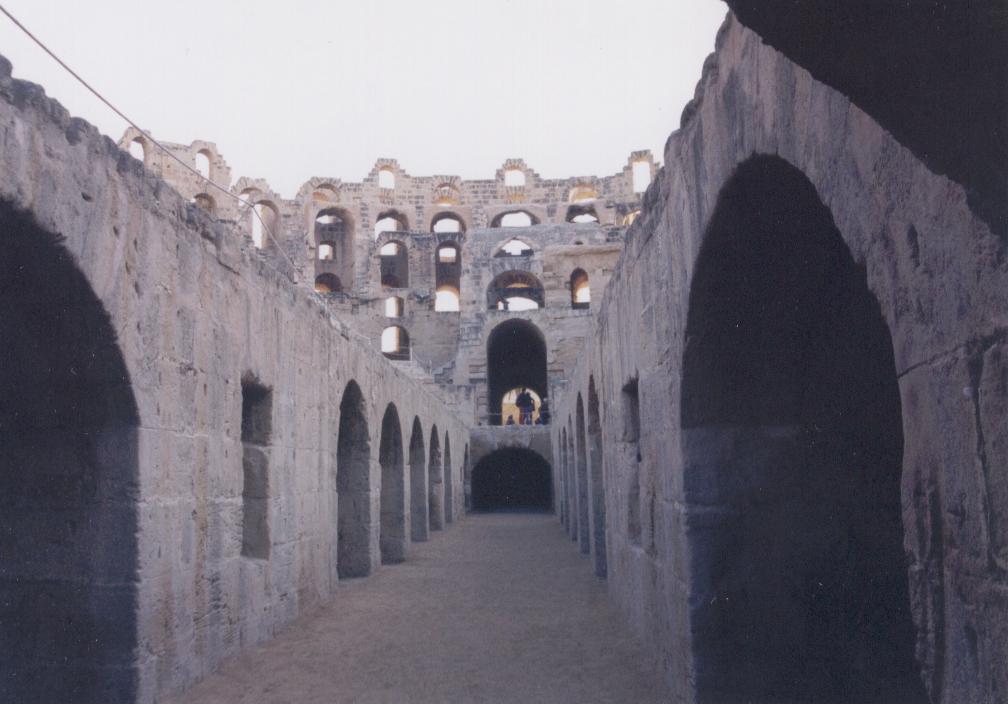
Cells beneath the Amphitheater floor
Thysdrus (‘El Jem’)
In northern Tunisia, we traded our 4×4 for an aged Toyota minibus driven by a silent but mad driver we affectionately dubbed ‘Sebulba’. His driving was like pod racing in Star Wars and our ‘Sebulba’ seemed just as reckless, his chosen vehicle eating up the road with a very loud chug-chugging sound. We passed through many different villages along the way, the most disturbing one being the ‘village of butchers’, so called by us for all the cow and goat heads that hung bleeding along the very side of the road, glossy eyed and lifeless.
One of the most interesting sites I visited during our Tunisian safari was Roman Thysdrus (modern El Jem). This settlement today is pretty unassuming except for the massive, extremely well-preserved amphitheatre in the centre. It was a real treat to sit in the seats of the amphitheatre, looking down on the scene of an imagined combat. I could not visit this site and not include a tense scene of gladiatorial combat, as seen by the legionaries on leave. Walking beneath the floor, along the cells where the animals and gladiators were kept, the sounds of those bygone days of barbarism and brutality echoed in my ears. The place definitely has memory. If you ever get the chance to visit El Jem, I would highly recommend it. It must have held some spectacular games in its day.

Roman Thugga
Another settlement that bears mentioning here, though it figures more largely in Killing the Hydra (the next book in the Eagles and Dragons series) is Thugga. This is a sprawling settlement surrounded by olive groves and green plains. It featured a large theatre, a massive capitol, public baths, a hippodrome and a network of paved streets that you can still walk today. This was a place where I could see my characters walking, and interacting with others. It was helped by the fact that we were the only group there the entire time. It was deserted, a Roman ghost town. The mosaics that decorated homes, baths, taverns and brothels are still there, intact and open to the sky.
The public latrine is there too, where men and women feeling nature’s call would sit cheek to cheek, literally. I wonder what odd bits of conversation happened there? Would Romans sit there and chat away while they did their business or would they stare at the ground and try not to make eye contact as they made offerings to the Roman infrastructure. Maybe the public latrine was just a place to be avoided, a place where one entered at one’s own risk for fear of robbery or worse. It was just down the street from the brothel (named ‘The House of the Cyclops’), so perhaps those patrons were regular users. The imagination ran wild in Thugga!

Public Latrine
Thugga
The final city we visited was Tunis, the ancient city of Carthage. Sadly, there was no sign of Dido, Aeneas, Hamilcar or Hannibal. When Rome razed Carthage to the ground after the Punic wars and salted its once-fertile earth, they built anew. And today, much of Tunis covers what the Romans built. There are however, some bits that are well worth the visit. One particular spot is the massive Antonine Bath complex which overlooks the sea. This was a quiet, sad site, surrounded by city, but it was still possible to glimpse the grandeur that it once exposited. Sadly, I was not able to see the great double harbour of ancient Carthage.
If you happen to be in Tunis, a must see is the Bardo Museum which contains much of the mosaics and statuary from all of the settlements of that part of the Roman Empire. This is a world class collection with some of the finest mosaics I have ever seen. It was there that the faces of Septimius Severus, Plautianus, Julia Domna and others stared back at me.

Antonine Baths
Carthage (modern Tunis)
Leaving Tunisia behind was bitter sweet for I knew that it may be a long while before I would be able to visit such ancient sites on a truly intimate basis again. Haggling in French in the bazaars was fun, as was the experience of seeing camel traders dressed in cloaks that looked a lot like Jawa outfits. I could have done without the bout of fever brought on by my poor choice of soup in Douz, but eating dates from a branch right off the tree was great. Such are the contrasts of travelling, but it all adds to the experiences required by research and writing.
Part III – The Severans
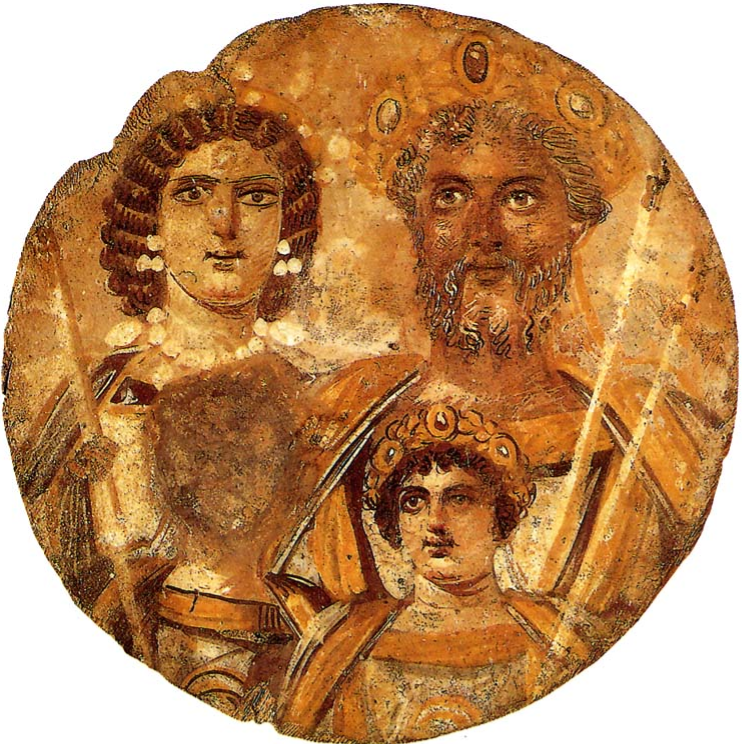
Imperial Family – The Severans
The Severans were a very interesting family and not without their tales of violence and greed and uniqueness of character. The period is not marked by something so brutal as the psychotic reign of Caligula, but there are certainly many more dimensions. It is a time of militarism, of a weakened Senate, a time of spymasters in various camps. It is a time marked by the rise of lower classes, the presence of powerful women and, over it all, a blanket of religious superstition at the highest levels. Many believe that it is this period in Rome’s history that marks the true beginning of the end of the Roman Empire.
The emperor at the time that Children of Apollo takes place is Septimius Severus (A.D. 193-211). He was the son of an Equestrian from Leptis Magna in North Africa. When Commodus was killed in A.D. 192, Severus was governor of Pannonia. When the Praetorians decided to auction the imperial seat a short time later, Severus’ legions declared him Emperor. He subsequently defeated his two opponents who had also declared themselves Emperor: Clodius Albinus and Pescennius Niger. A purge of his opponents’ followers in the Senate and Rome made Severus sole ruler of the largest empire in the world.

Emperor Septimius Severus
Septimius Severus was a martial emperor, the army was his power and he knew how to use it, how to keep the legions loyal and happy. He increased troops’ pay and in a radical move, allowed soldiers to get married. Severus was good to his troops, his Pannonian Legions and victorious Parthian veterans. He promoted equestrians to ranks previously reserved for aristocrats and lower ranks to equestrian status. There was a lot of mobility within the rank system at the time due to Severus ‘democratization’ of the army. Remember, this was an emperor who favoured his troops, especially those who distinguished themselves. The Emperor is open and friendly with Lucius Metellus Anguis in Children of Apollo, but there are prices to be paid. No favour is free.
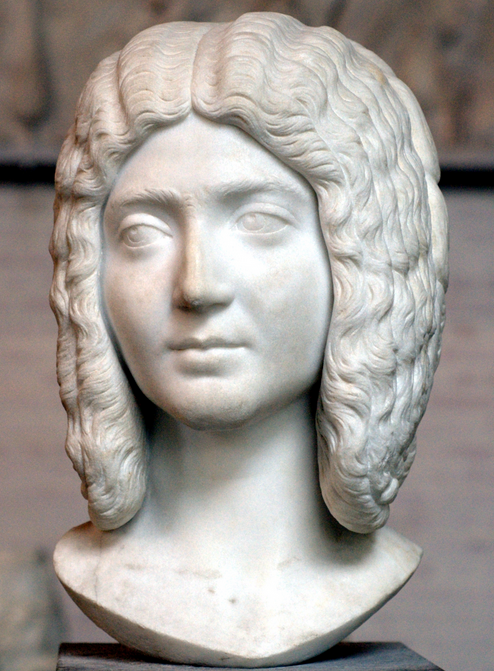
Julia Domna
One of the most interesting characters of the period is Severus’ Empress, Julia Domna. She appears as one of the strongest women in Rome’s history, an equal partner in power with her husband who heeded her advice but also respected her. Julia Domna was the first of the so-called ‘Syrian women’, she and her sisters hailing from Antioch where their father had been the respected high priest of Baal at Emesa (Homs in modern Syria).
Julia Domna was also highly intelligent, known as a philosopher, and had a group of leading scholars and rhetoricians about her. They came from around the Empire to be a part of her circle, to win commissions from her. No doubt, her strength also bought her a great many enemies, including the Praetorian Prefect and kinsman to Severus, Gaius Fulvius Plautianus. The conflict between the Empress and the Prefect of the Guard is something that will cause Lucius Metellus Anguis a good deal of trouble in Children of Apollo and sequel, Killing the Hydra. To boot, Plautianus’ daughter, Plautilla, was married to the Empress’ son, Caracalla. One can imagine what family gatherings must have been like!
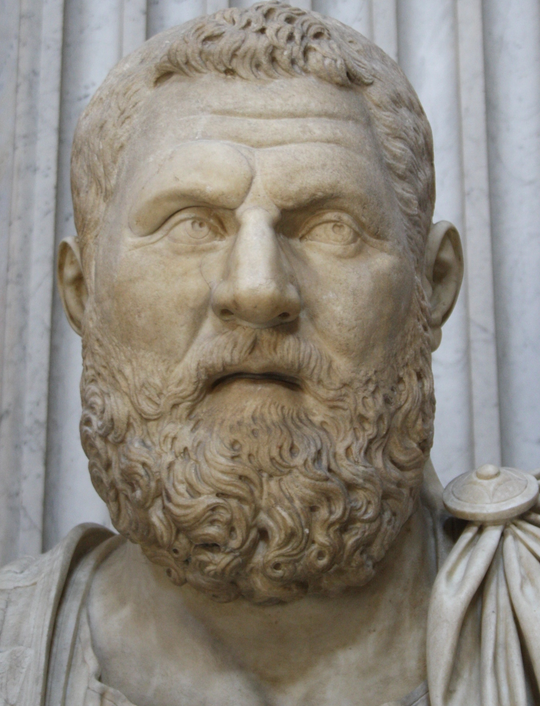
Gaius Fulvius Plautianus
Apart from the power, their keen ability to wield it, and their nurturing of the army’s loyalty, a very interesting and important aspect of Septimius Severus and Julia Domna is the great faith they both placed in astrology and horoscopes. They consulted with their astrologer and the stars on all decisions. Astrology affected everything, including Severus’ choice of her as his wife – he was greatly impressed by her horoscope.
By all accounts Caracalla and Geta, Severus’ heirs, were both at odds much of the time. The two brothers seem to have tolerated each other’s presence and competed fiercely, even in the hippodrome where at one point they raced each other so fiercely on their chariots that they ended up with several broken bones, almost leaving their father without a successor. Caracalla seems to have been the favourite of the Empress, though in later years Julia Domna does come to Geta’s defence, however much in vain.

Julia Maesa
The Syrian women continued to hold power under the daughters of Julia Domna’s older sister, Julia Maesa who, herself, managed to save the dynasty for a time after the death of Caracalla. Julia Maesa was the mother of Julia Soaemias and Julia Mamaea, both mothers in their turn, of the last Severan emperors, Elagabalus and Alexander Severus. These powerful women held the family together. However, in the end, under Alexander Severus, the loyalty of the army was lost, and what once gave the Severans their ultimate power became their downfall.
There is a lot more to each of the people I have mentioned so briefly here and it is a part of Roman history that is not often explored. However, the Severans made their mark on the Empire and brought about massive changes, from artwork, to marriage for legionaries, to a crippling of the Senate and the extension of Roman citizenship to people all over the Roman Empire. They were strong, religious, varied and flawed, and all make for fantastic fiction!
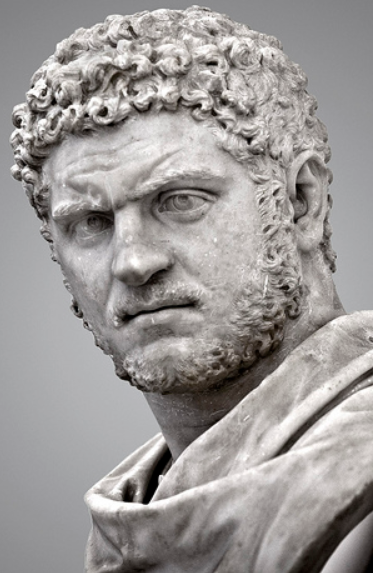
Caracalla
In the next instalment of The World of Children of Apollo, we’ll be following Lucius Metellus Anguis to Ostia and Rome itself as he leaves North Africa to return home after many years. If you are up for a Roman holiday, be sure to check it out!
What is your favourite imperial Roman family? I’d love to hear from you in the comments below.
Part IV – Rome: Caput Mundi
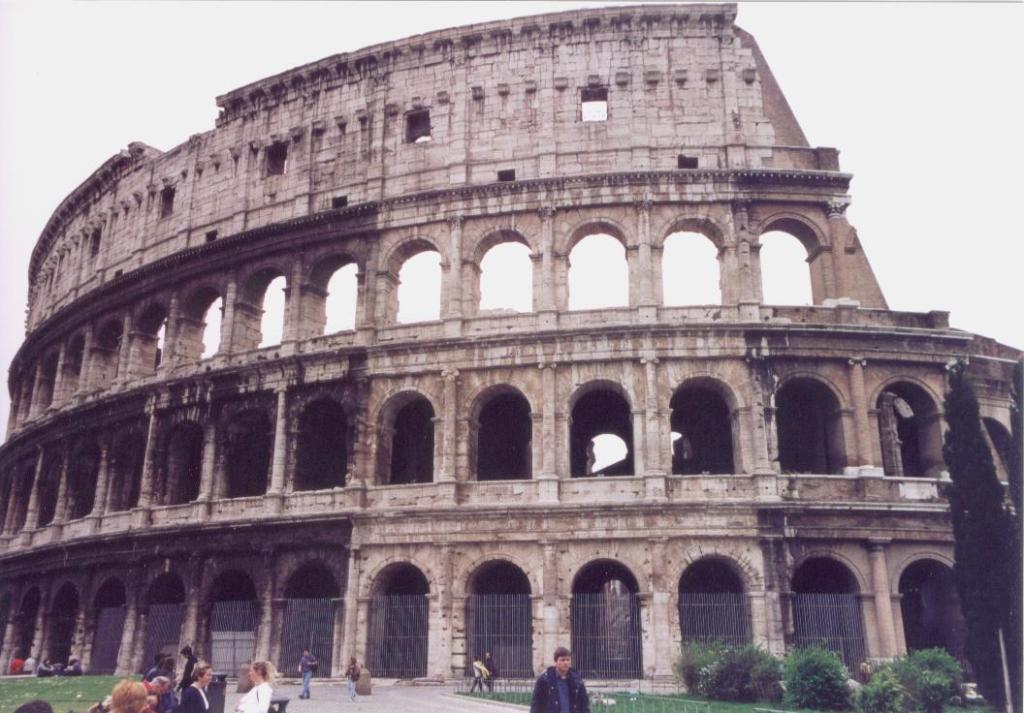
The second half of the book leaves behind the dunes and swaying palms of Roman North Africa for Italy, particularly Rome, as well as Cumae and Etruria. For this fourth instalment of The World of Children of Apollo we will focus on Rome itself.
Rome was indeed the centre of the world during this period, the omphalos to which all roads led and from which all decisions flowed. It was the ultimate goal in Severus’ civil war with Niger and Albinus and, despite his favouritism of Leptis Magna, the jewel the Emperor knew he must hold with his massive, loyal Praetorian Guard and the legion he had stationed at Albanum, outside of Rome.

Arch of Septimius Severus – Forum Romanum
It would take a whole book to scratch the surface of Rome so this will only be a very brief look at some of the sites that are a focus of Children of Apollo. Rome is one of my favourite cities, if not for the food then for the history that awaits you around every corner, that towers over you, and lies beneath your feet. Before my first trip to Rome, the glory of Rome, the Empire, had only been something I had read about. It was only when I walked those streets and set foot in the Forum that the idea came fully to life. Even among the ruins of the Forum Romanum, the glory of this ancient capital is keenly felt, whether it is the paving slabs of the Via Sacra, the Arch of Septimius Severus or the temple of the Divine Julius where people still lay flowers.
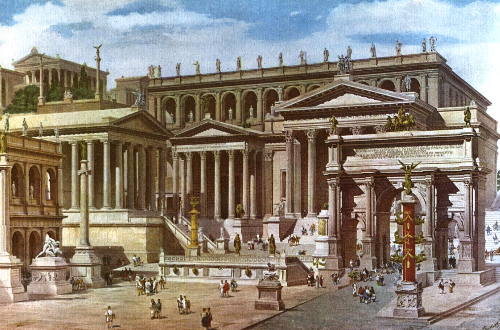
Artist Reconstruction of the Roman Forum
When Lucius and Argus leave North Africa, they put in at Ostia, the Port of Rome at the mouth of the Tiber. It was here, at Rome’s port where most of the seaborne traffic headed for Rome came. The hexagonal port of Trajan was surrounded by warehouses where grain and goods from all over the Empire would be held. Beyond the warehouses, Ostia was full of well-decorated homes, and tabernae to serve residents and visitors in the prosperous port. Brothels, gambling establishments and fine dining all made for anything but a boring night out!
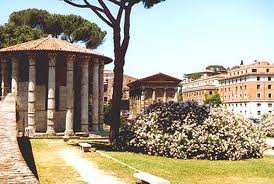
Forum Boarium and Temple of Hercules
Those going on to Rome could have taken a barge up the Tiber, or travelled by land. When Lucius and Argus finally arrive in Rome, they find themselves in the Forum Boarium, the cattle market where a Temple of Hercules still stands. In the story, for various reasons, Lucius’ family’s home is now near this smaller forum where, in generations past, they used to live on the Palatine Hill.
In the early 3rd century A.D. the Palatine Hill was virtually one big sprawling Imperial palace complex, with various additions having been made by successive emperors. Severus was no different and built a massive new addition that jutted out from the southern edge of the hill to overlook the Circus Maximus. Front row seats for the chariot races! Looking down on the faint outline of the great circus, I could not resist writing an exciting chariot race scene in the book. The Circus could hold up to 250,000 spectators and their roar must have been deafening.

Severan Palace Complex from the Circus Maximus
When walking about on the Palatine Hill, it felt peaceful, a world away from the busy fora of Rome. I imagine it was the same for members of the imperial family who could stroll about the gardens and palaces in peace to the cawing of peacocks and play of water in fountains. One of the main locations of Children of Apollo is the Temple of Apollo on the Palatine Hill, where a crucial event of Lucius’ youth takes place. This temple, built by Augustus beside his palace, was only the second in the city dedicated to that god. If ever you get the chance to visit the Palatine Hill and the museum there, it is a definite treat, a world away from the busy streets below.

The Roman Forum with the Arch of Septimius Severus
Septimius Severus left his mark in many ways on Rome and not only with his massive palace complex. Flanking the palace was a massive, decorative façade that was unveiled during the celebrations of his triumph. This structure, dubbed the ‘Septizodium’, was a huge wall ornamented with elaborate statuary where water flitted from section to section to dazzle spectators. Not much of it remains today but when it was unveiled, the populace must have been well pleased. The arch of Septimius Severus is one of the more impressive sites in the Forum and this can be seen directly in front of the Curia (Senate House) where he had it built as a reminder to the senators of Rome who the real power was. The artwork on the arch differs in style to others, the period heralding a gradual shift to what we recognize more as a Byzantine perspective.

Ruins of the Temple of Venus and Rome
All over Rome, there is so much to see and when there, I walked for days, never tiring of the sights that met my eyes, imagining what Lucius would have seen. From the mausoleums of Hadrian and Augustus, to the Colosseum, the Ludus Magnus and the Temple of Venus and Rome where Lucius has an important rendezvous, Rome is a city where life, past and present, is meant to be felt and enjoyed. One of the great joys of writing Children of Apollo was being able to visit Rome again.

Ruins of the Palatine Hill and the Circus Maximus
So, I do hope that one day, your road will take you to Rome where, with gelato in hand, you can experience the majesty of this wondrous city.
Part V – Etruria
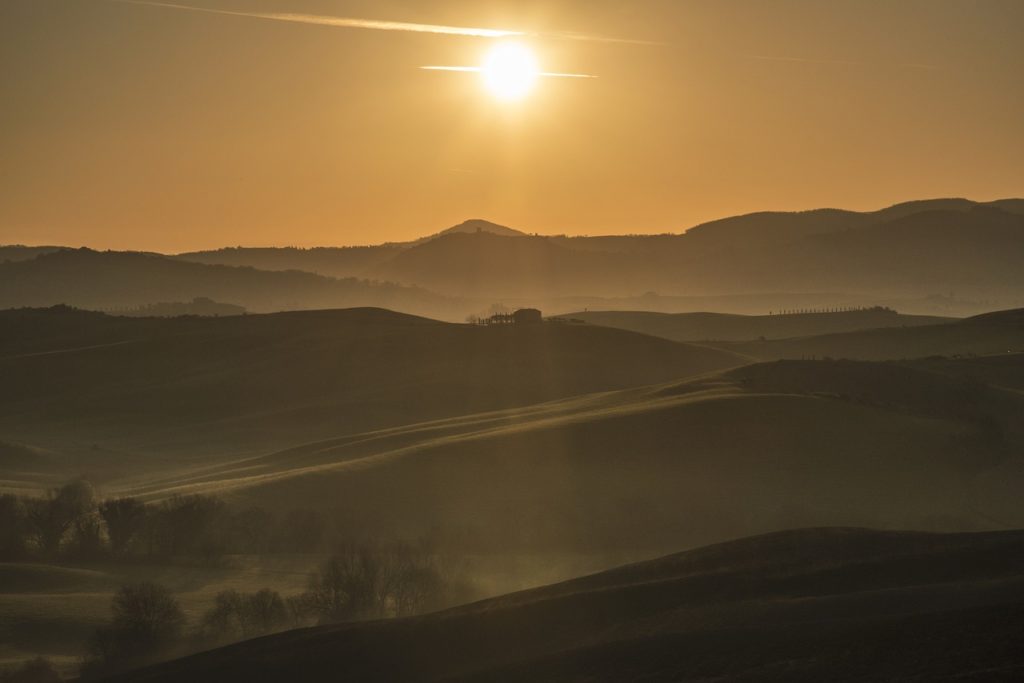
In the previous installment we visited Rome, the centre of the world when the Roman Empire was at its greatest extent. We will now leave that ancient city for an even more ancient landscape. What we know today as Tuscany, the central and western region of Italy, was then part of the larger central Italian kingdom of Etruria. This region plays a large role in Children of Apollo, as it is the ancestral land of Lucius Metellus Anguis’ family. For them, the family estate is a place of childhood memory, of escape, and of mystery. Their roots run deep in that ancient land.

Chimera of Arezzo
I won’t go into detail about the history of the Etruscans here, suffice it to say that Etruscan culture was the dominant and more advanced culture in the Italian peninsula around 650 B.C. Their realm included not only modern Tuscany, but also Umbria, Latium, and Emilia-Romagna. Indeed Etruscan kings ruled Rome itself until about 509 B.C. when the last king, Lucius Tarquinius Superbus, was expelled from Rome by Lucius Junius Brutus, who led the uprising. With the rape of Lucretia by the king’s son, Sextus Tarquinius, Etruscan kingship in Rome ended.
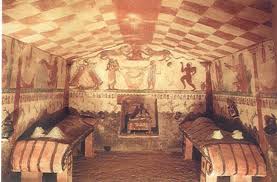
Etruscan Tomb interior
However, the Etruscans left a legacy and influence over the Roman people, other than a hatred of kingship. The Etruscan kings were also responsible for much of Rome’s architecture and religious practices. Etruscan artwork too is stunning, and though it had a great deal of Hellenic influence due to trade with Greece, it has a style all its own, be it the massive bronze burial urns, the elaborately painted tombs, or the magnificent Chimera of Arezzo. To see a magnificent collection of Etruscan artefacts, the archaeological museum in Bologna is a definite must.
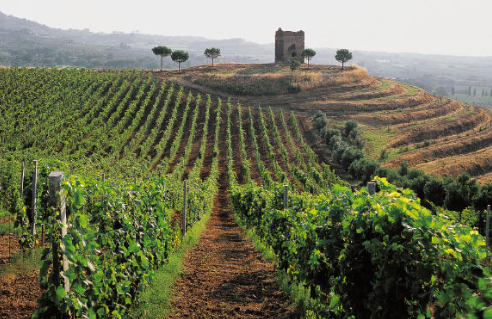
Etrurian Vineyards
History aside for a moment, the thing that inspired me most about Tuscany (I’ll use the modern name now) was the countryside. I am deeply influenced in my writing by physical surroundings and Tuscany, particularly the Chianti Classico region where I spent some time and where part of the book is set, left a definite mark. Not to dissuade anyone from visiting Florence or Siena, those two medieval adversaries. I thoroughly enjoyed walking the streets of both, eating bruschetta and gelato between museum and market stops. It’s a magnificent region to visit.
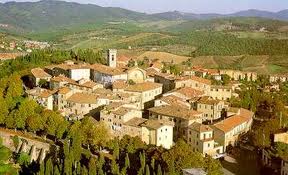
Radda in Chianti
Heading into the countryside between Florence and Siena, leaving the world of the Medicis and tourist throngs behind, was a very special experience. I had expected a drier landscape my first time there, rocky and hot, similar to the Peloponnese or southern Italy. It was anything but. Tuscany was lush, quite hilly and tree-clad. The weather went from sun to storm quickly and then back to sun. Amid acres of vineyards where my favourite wine is made (Chianti, of course!), are castles and medieval towns where they still take siesta and where you can enter a cellar (there is a great one in Radda) to purchase bottles of magnificent wine, cheese and the best wild boar sausage you’ve ever had. And the bread, did I mention the bread? For those of you who are interested, you can rent a villa in Tuscany for a very good price, and it’s well worth it.
After having driven around Chianti, I knew I had to set part of the book there. The Metellus family villa is, of course, fictional. However, the look and feel are real. The villa itself is a typical villa rustica, an open air villa in the countryside, usually at the centre of an agricultural estate, as it is in the book. It was not uncommon for many noble Roman families to have countryside estates outside of Rome to which they could escape for leisure, or in times of crisis. These were often handed down generation to generation.
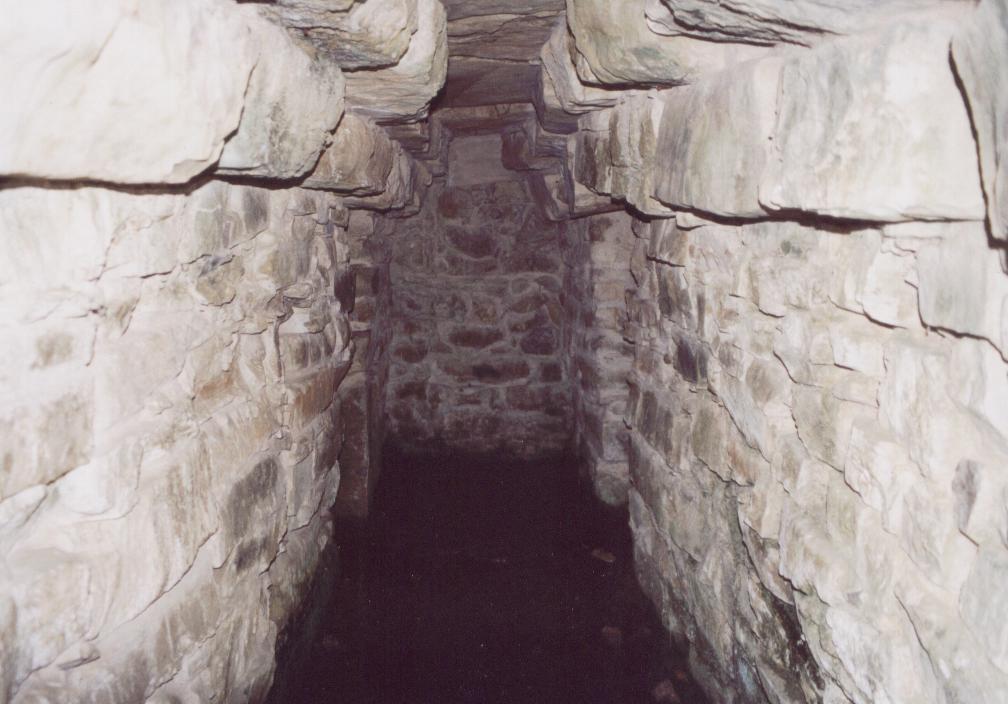
Etruscan tomb interior – Castellina in Chianti
Up the mountain from the Metellus villa and outbuildings, is another tie to the family, something linking them to their Etruscan roots. In a part of the book, Lucius’ younger brother Quintus finds out a terrible family secret when he overhears a conversation in the tomb at the top of the mountain. Without giving too much away, this turns the young boy’s life upside down. The setting for the tomb of the Metellus family ancestors was inspired by the Etruscan tomb just outside of Castelina in Chianti. The tomb is quite unassuming on the outside, a large green mound topped by cypress trees which were often associated with the necropolis and rites for the dead in ancient times. The tomb is entered via stone-lined corridors with small chambers to either side. If you do go in, look out for snakes! It’s nice and cool inside.

Ipogeo Etrusco de Montecalvario (6th century B.C.)
There is more I could say about this beautiful landscape but really, there is no substitute for actually going there. For a great price, you can rent a refurbished medieval stone villa in amongst the vineyards and eat at a different restaurant in a different village every night. Enjoy wine and food (try the Trattoria Grotta della Rana in San Sano) and afterward walk along a small road flanked by olive groves on one side and grape vines on the other. Watch snakes and lizards skitter across dusty, sun-soaked lanes lined by sleek cypresses, and listen to all manner of birdsong in the hills. Most of all, enjoy the history of the land on which you are walking and savour the fact that it has not changed all that much since the Etruscan chariots thundered across the valleys.
Part VI – Cumae and the Sibyl
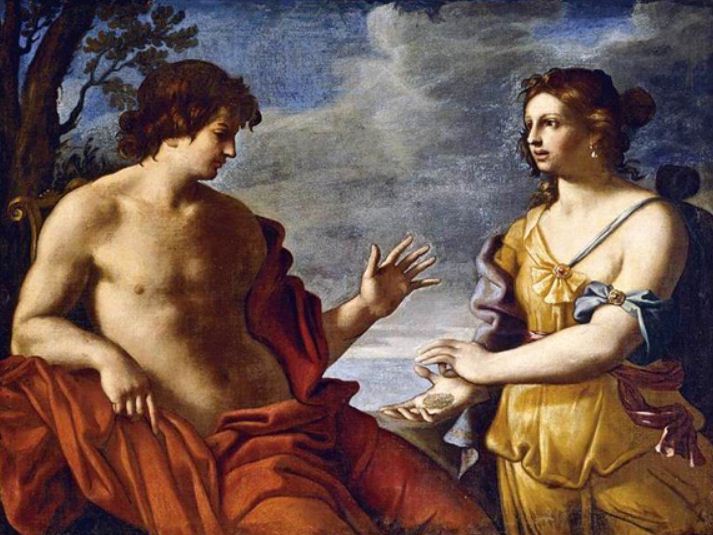
Apollo and the Sibyl
…from her shrine the Sibyl of Cumae sang her fearful riddling prophecies, her voice booming in the cave as she wrapped the truth in darkness, while Apollo shook the reins upon her in her frenzy and dug the spurs into her flanks. The madness passed. The wild words died upon her lips… (Aenied, Book VI)
In this series of posts on The World of Children of Apollo, we have been through the sands and cities of Roman North Africa, trod the marble-clad streets of Imperial Rome, and wandered the lush, ancient land of Etruria. We have met the imperial family and had a hint of the dangers that can come of an association with them.
In this post, we set off on a slightly different path into the realm of mystery and legend, and visit the cave of the Cumaean Sibyl, Apollo’s ancient oracle on the Italian peninsula. It is in the cave of the Sibyl that Lucius Metellus Anguis learns of a cryptic prophecy concerning his future.
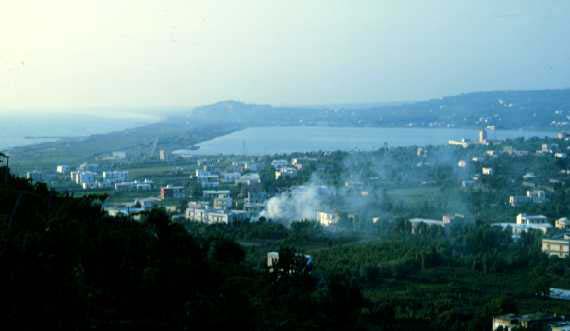
Cumae
Legend has it that Cumae was founded by ancient Greeks as early as 1050 B.C. and was, according to Strabo, the oldest of the Greek colonies on mainland Italy or Sicily. Cumae survived many years of war and attack until, under the Empire, it was seen as a quiet, country town in contrast to the very fashionable settlement of Baiae nearby. The acropolis of Cumae is a mass of rock rising two-hundred and sixty-nine feet above the seashore which lies one hundred yards away. The acropolis contains three levels of caves with many branches, and it is within these caves that the Cumaean Sibyl had her seat.
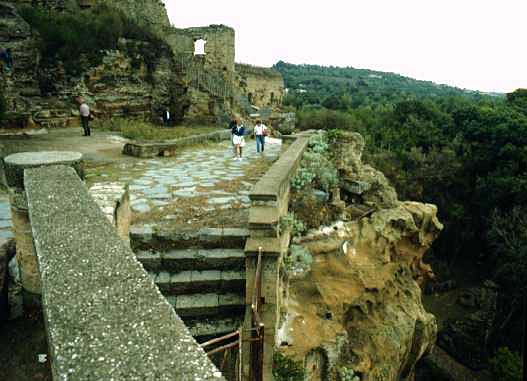
Cumaean Acropolis and Cave
One can approach the rock from the south-east. It is steep on all sides with remnants of the original Greek fortifications. The acropolis is an ancient place, a place where myth and legend can, if you manage to block out modernity, come alive. Within the acropolis stood the Temple of Apollo, God of Prophecy. Tradition has it that Daedalus himself built the temple. This was restored by the Romans who had great reverence for Apollo and the Sibyl who had prophesied the future of Rome to the last king, Lucius Tarquinius Superbus, in the Sibylline Books.

Aeneas and the Sibyl
As the story goes, Tarquinius would not pay the Sibyl her extortionate price for all nine books. The Sibyl burned three and yet he refused to pay. She burned another three and the king relented, paying the original price for the remaining three books. A lesson there, to be sure! The Sibylline Books were kept in the Temple of Jupiter on the Capitoline Hill until c. 80 B.C. when it burned down. The books were so valuable, having been referred to in times of great crisis for Rome, that a re-collection of Sibylline prophecies was undertaken in all corners of the Empire. Augustus finally had the prophecies moved to the Temple of Apollo on the Palatine Hill, where our main character, Lucius Metellus Anguis spends much time in Children of Apollo.
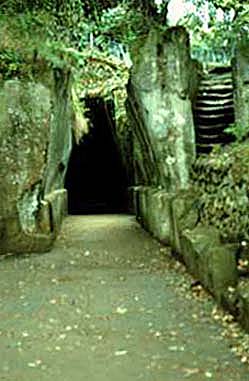
Entrance to the Cave
But who was the Sibyl? Her person is surrounded by the haze of legend. She was mortal, but she lived for a thousand years. In the Aeneid, it was the Sibyl who guided Aeneas to the underworld so that he could visit his dead father, Anchises, in Hades. Her story is a sad one too. When Apollo met her, the god offered her a wish in exchange for her virginity. The Sibyl then picked up a handful of sand and asked that she live as many years as the number of grains of sand she held in her palm. The old adage, ‘Careful what you wish for,’ certainly rings true in the Sibyl’s case. Tragically, she did not wish for eternal youth as well, and as a result, over the centuries, her young, once-beautiful body withered until all that remained was her prophetic voice. In Children of Apollo, this is a voice that Lucius Metellus Anguis will not soon forget.

The Sibyl’s Inner Chamber
The traditions of ancient Greece and Rome are of full of tales of tragedy, choices wrongly-made, beauty, love, hate and deception. The tales are heroic and terrifying, inspiring and thought-provoking. And oftentimes, there is a physical place associated with a particular tale, a place you can visit and hear the voices of the past. You can stand in a spot where once a Trojan hero may have stood, as well as emperors and Caesars, or common soldiers. It may be a place or tale that shook the foundations of the world, of a people, or of a solitary individual trying to find his way.
For Lucius Metellus Anguis, the Sibyl’s cave is a place that will haunt him for a long time to come.
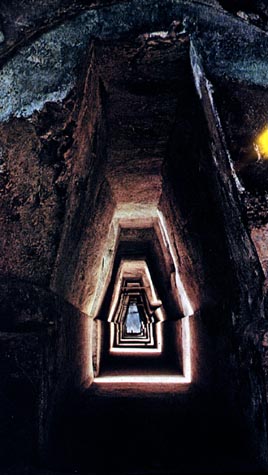
Looking to the Light from Inside the Cave

